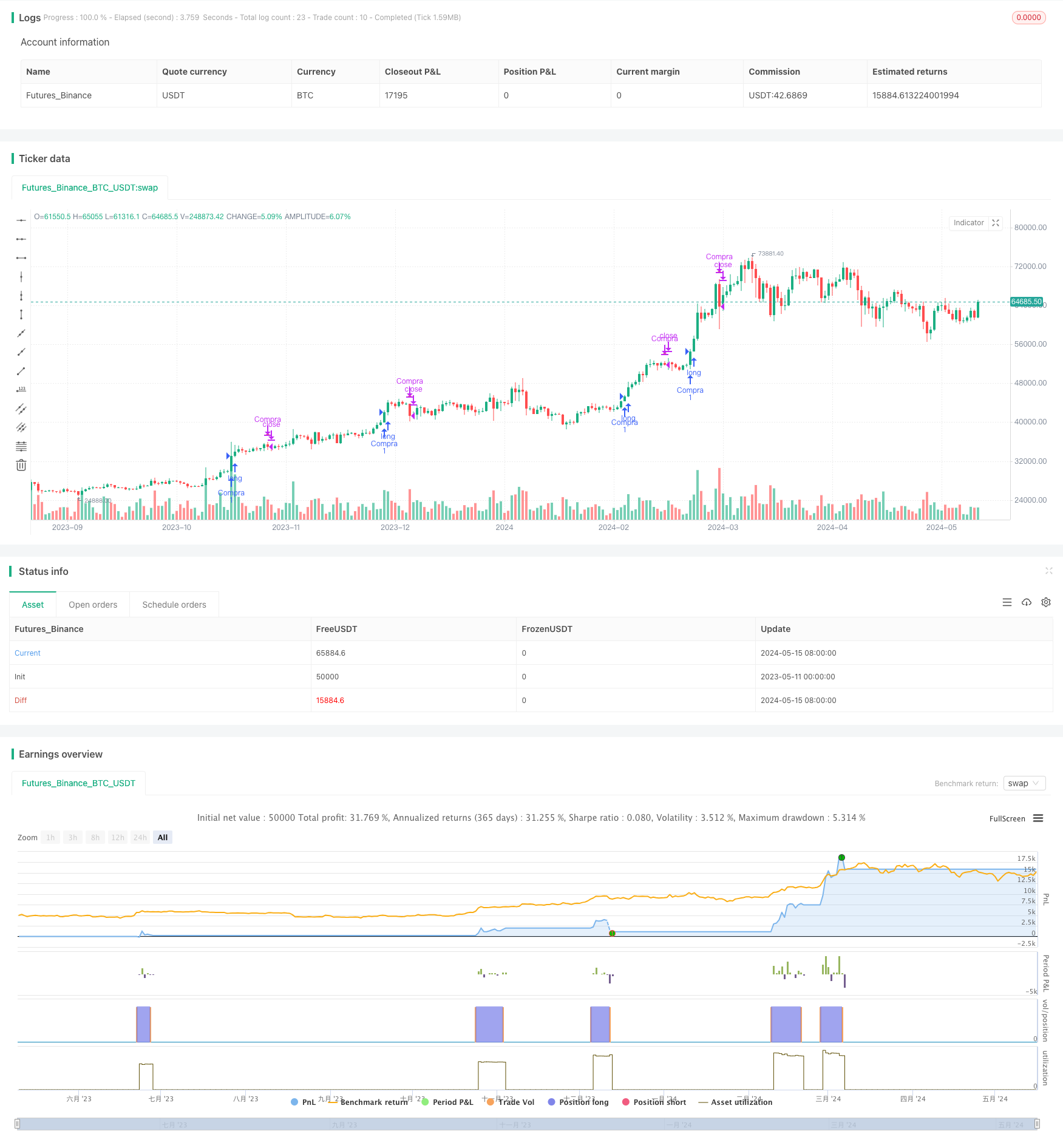
概述
超级均线与Upperband交叉策略是一种基于技术指标的量化交易策略。该策略利用指数移动平均线(EMA)和Upperband指标来捕捉市场的上涨趋势。当收盘价突破Upperband并且满足一定的条件时,策略会发出买入信号;当收盘价跌破3日EMA时,策略会发出卖出信号。该策略适用于比特币等交易量大、趋势明显的市场。
策略原理
该策略的核心是利用EMA和Upperband两个技术指标来判断市场趋势和买卖时机。首先,策略计算Upperband指标,该指标考虑了价格的波动性,当价格相对于平均价格的偏离程度较大时,Upperband的值会相应增大。然后,策略判断收盘价是否突破了Upperband的均线,以及是否满足其他买入条件,如果满足则发出买入信号。持有头寸后,当收盘价跌破3日EMA时,策略会发出卖出信号。
策略优势
适用于趋势性较强的市场:该策略在上涨趋势中表现良好,特别适合像比特币这样波动大、趋势明显的品种。
结合价格和波动性:Upperband指标综合考虑了价格水平和价格波动性,能够更全面地反映市场状态。
简单易用:该策略逻辑清晰,使用的指标简单,易于理解和实现。
适合短线交易:该策略的买卖信号频率较高,适合进行短线交易。
策略风险
震荡市风险:在波动大、无明显趋势的震荡市中,该策略可能会频繁交易,导致较大的滑点和交易成本。
指标参数风险:该策略对指标参数较为敏感,参数设置不当可能导致策略表现不佳。
过拟合风险:该策略在特定市场表现良好,但可能无法适应市场环境的变化,存在过拟合的风险。
策略优化方向
引入趋势确认指标:可以引入如MACD等趋势确认指标,以过滤掉震荡市中的伪信号。
优化参数选择:可以通过遗传算法等优化方法,寻找最优的指标参数组合。
加入风险控制模块:可以引入如止损、动态仓位管理等风险控制措施,以降低策略风险。
多品种适应:可以通过机器学习等方法,使策略能够自适应不同品种和市场环境。
总结
超级均线与Upperband交叉策略是一个简单实用的量化交易策略,适用于趋势性较强的市场。该策略利用EMA和Upperband指标捕捉上涨趋势,逻辑清晰,易于实现。但该策略也存在一定的风险,如震荡市风险、参数风险和过拟合风险。未来可以从趋势确认、参数优化、风险控制和多品种适应等方面对策略进行优化,以提高策略的稳健性和适应性。
/*backtest
start: 2023-05-11 00:00:00
end: 2024-05-16 00:00:00
period: 1d
basePeriod: 1h
exchanges: [{"eid":"Futures_Binance","currency":"BTC_USDT"}]
*/
//@version=5
strategy("Estratégia de Cruzamento de Bandas", overlay=true)
// Entradas
factor = input(0.001, title="Factor")
length = input(20, title="Length")
// Cálculo da Upperband
Upperband = high * (1 + 2 * ((((high - low) / ((high + low) / 2)) * 1000) * factor))
// Condição de Compra
buy_condition = close > ta.ema(close, 3)
// Variável para controlar se a compra foi feita
var bought = false
// Sinal de compra
buy_signal = (close[1] <= ta.sma(Upperband, length)[1]) and (close > ta.sma(Upperband, length)) and buy_condition
// Sinal de venda
sell_signal = close < ta.ema(close, 3) and bought
// Atualizar o status de compra
if buy_signal
bought := true
strategy.entry("Compra", strategy.long)
else if sell_signal
bought := false
strategy.close("Compra")
// Plotagem dos sinais de compra e venda no gráfico
plotshape(series=buy_signal, title="Compra", color=color.green, style=shape.triangleup, location=location.belowbar)
plotshape(series=sell_signal, title="Venda", color=color.red, style=shape.triangledown, location=location.abovebar)